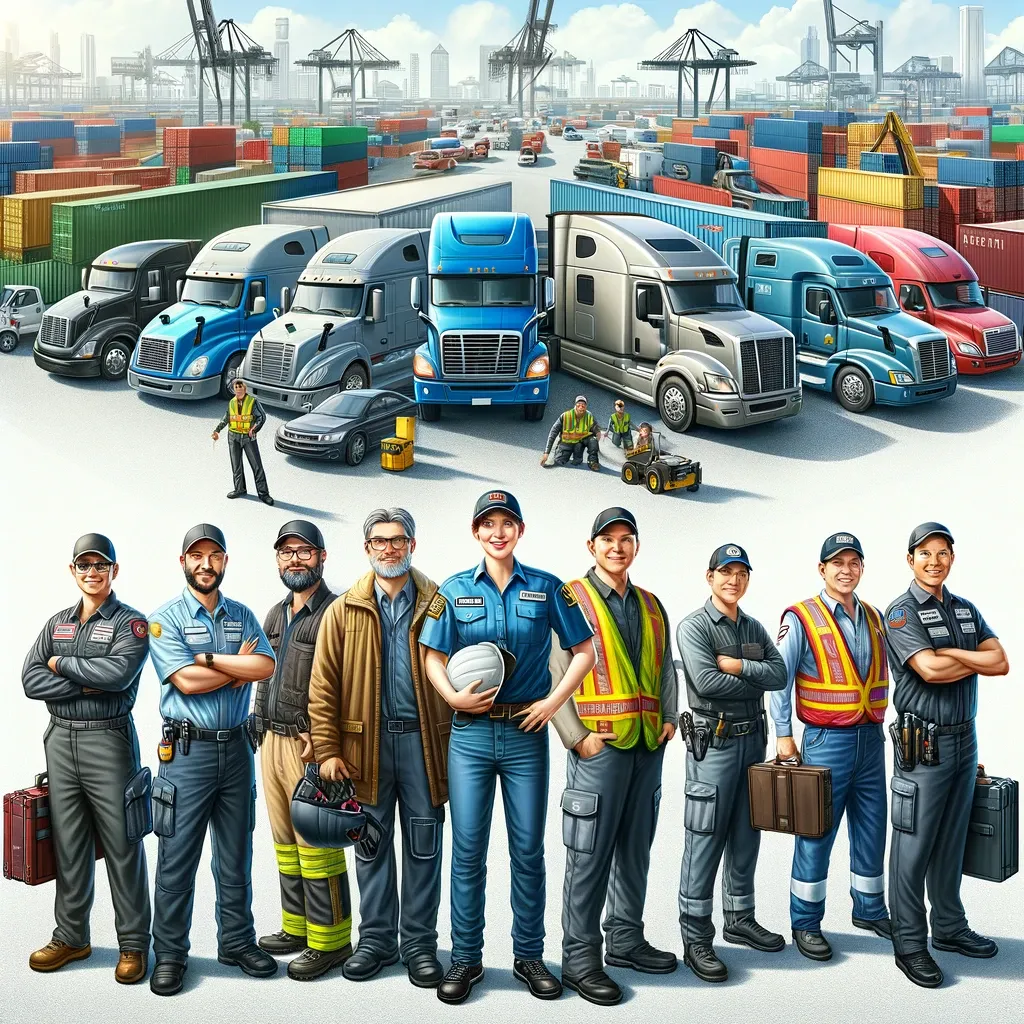
The transportation and logistics industry is facing a growing challenge: a severe shortage of drivers, particularly in the trucking sector, which serves as the backbone of the global supply chain. As the demand for goods transportation increases, the gap between available drivers and industry needs continues to widen. This shortage, driven by a combination of workforce and operational factors, is reshaping how the industry operates and forcing companies to rethink their strategies for sustainability and growth.
Understanding the Driver Shortage
- Aging Workforce
- The trucking industry has a disproportionately aging workforce, with many drivers nearing retirement. A lack of younger recruits to fill these positions exacerbates the problem.
- Demanding Schedules
- Truck drivers often face long hours, extended time away from home, and irregular schedules. These conditions deter many potential candidates from pursuing a career in the field.
- High Turnover Rates
- The physically and mentally demanding nature of the job, combined with relatively stagnant wages in some sectors, leads to high turnover rates. Drivers frequently leave the profession in search of less stressful employment opportunities.
The Impact on the Industry
- Increased Costs
- With fewer drivers available, companies must compete to attract talent, leading to higher wages and recruitment costs. Delays caused by shortages also increase operational expenses.
- Supply Chain Disruptions
- A lack of drivers results in slower deliveries, delayed shipments, and bottlenecks in the supply chain, affecting industries that rely on just-in-time inventory systems.
- Decreased Capacity
- Logistics companies struggle to meet demand, forcing businesses to scale back operations or seek alternative, often more expensive, transportation modes.
Strategies to Address Driver Shortages
- Attracting New Talent
- Enhanced Compensation: Companies are offering higher pay, signing bonuses, and comprehensive benefits packages to make the job more appealing.
- Diversity and Inclusion: Recruiting efforts are expanding to include underrepresented groups, such as women and younger workers, to tap into a broader talent pool.
- Improving Working Conditions
- Flexible Schedules: Offering more predictable schedules and regional routes helps drivers maintain a better work-life balance.
- Workplace Enhancements: Upgrading vehicle technology for comfort and safety, providing rest stops, and ensuring fair treatment can boost driver satisfaction.
- Investing in Training and Education
- Developing accessible training programs and providing financial assistance for obtaining commercial driver’s licenses (CDLs) can lower the barriers to entry for prospective drivers.
- Leveraging Technology
- Autonomous Trucks: While still in the developmental phase, autonomous trucking technology promises to alleviate the strain caused by driver shortages. Fully autonomous vehicles could reduce dependency on human drivers for long-haul routes.
- Telematics and Route Optimization: Advanced technologies can make drivers' jobs easier by improving navigation, reducing stress, and maximizing efficiency.
- Retention Programs
- Creating mentorship opportunities, career advancement pathways, and rewards for loyalty helps companies retain experienced drivers and reduce turnover.
Exploring Long-Term Solutions
- Partnerships with Educational Institutions
- Collaborating with vocational schools and colleges to establish dedicated training programs can create a pipeline of skilled drivers entering the workforce.
- Public Policy and Incentives
- Governments can support the industry through grants, tax breaks, and initiatives that encourage individuals to join and remain in the trucking profession.
- Alternative Transportation Modes
- Utilizing rail and intermodal transportation for long-distance shipping can reduce the reliance on trucking alone, alleviating pressure on the driver workforce.
The Role of Automation in the Future
While automation is not an immediate solution, the development of autonomous trucks is a promising innovation. These vehicles could handle repetitive, long-haul routes, allowing human drivers to focus on short-haul and last-mile deliveries where their skills are most needed. However, widespread adoption will require addressing regulatory, safety, and ethical considerations.
Conclusion
The driver shortage in the transportation and logistics industry is a pressing issue that demands immediate attention and innovative solutions. By improving working conditions, leveraging technology, and exploring long-term strategies, companies can mitigate the impact of this challenge and ensure the continued flow of goods across the global supply chain. As the industry adapts to changing workforce dynamics, addressing the driver shortage will remain a critical priority for sustaining growth and operational efficiency.
Jenny is a business insurance broker with Waypoint Insurance. She can be reached at 604-317-6755 or jhansen@waypoint.ca
Jenny Holly Hansen is a cohost with Chris Sturges of the Langley Impact Networking Group. You are welcome to join us on Thursday’s from 4pm to 6pm at: Sidebar Bar and Grill: 100b - 20018 83A Avenue, Langley, BC V2Y 3R4
Jenny Holly Hansen is a cohost with Chris Sturges of the WRN News - Langley Edition
Tags: #Langley Impact Networking #Business Support #Industry Insights #Transporation and Logistics #Driver Shortages #Jenny Holly Hansen

